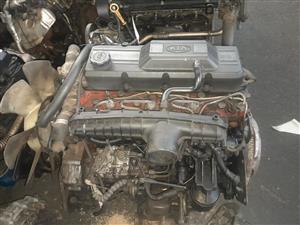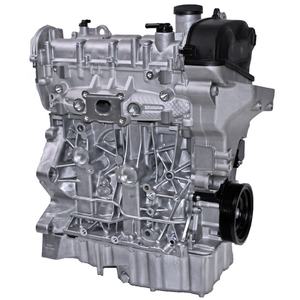Reliable and Effective Small Cars and truck Motor Efficiency Analysis
Examining the efficiency of small vehicle electric motors is a nuanced task that requires an eager eye for information and a deep understanding of auto engineering principles. By examining crucial metrics such as horse power and torque, as well as assessing gas performance, we can uncover insights into how small automobile engines can be enhanced for peak efficiency.

Little Auto Motor Performance Metrics
In evaluating the performance of little cars and truck motors, crucial metrics such as velocity, gas performance, and power result play an essential role in determining their general efficiency and suitability for different driving conditions. Acceleration, gauged in secs from 0 to 60 miles per hour, shows just how promptly a tiny auto can get to greater speeds, which is necessary for merging onto highways or overtaking other lorries. Gas performance, normally determined in miles per gallon (MPG), shows how far a tiny auto can take a trip on a gallon of fuel, impacting running costs and ecological sustainability. Power outcome, revealed in horsepower (HP) or kilowatts (kW), signifies the engine's capacity to produce the required force to propel the lorry, affecting its performance in numerous roadway conditions. By evaluating these efficiency metrics thoroughly, manufacturers, vehicle drivers, and auto lovers can make informed choices relating to the selection and optimization of tiny automobile motors to satisfy their specific needs and preferences.

Horsepower and Torque Evaluation
With a fundamental duty in understanding little car motor torque, horsepower and performance evaluation provides understanding right into the engine's power shipment attributes. Horsepower is a dimension of the engine's capability to do persuade time, representing the price at which job is done. In the context of small cars and truck electric motors, horsepower is important for establishing acceleration, full throttle, and general performance. Torque, on the other hand, measures the engine's rotational force, indicating its ability to overcome resistance. Small vehicle engines with higher torque values generally feel more responsive and supply far better velocity, making them ideal for city driving and overtaking maneuvers. When evaluating horsepower and torque in small automobile motors, it is necessary to take into consideration just how these metrics interact to supply a efficient and well balanced driving experience. By recognizing the partnership in between horse power and torque, auto designers can enhance engine performance to satisfy the particular requirements of small vehicle applications.
Fuel Performance Examination
The evaluation of fuel performance in tiny vehicle electric motors plays a critical role in identifying their financial and ecological effect. In little auto motors, where compact size commonly associates with far better fuel economy, different aspects affect performance.
Small vehicle motors that attain greater MPG scores are thought about much more fuel-efficient, resulting in cost financial savings for motorists and minimized discharges that benefit the setting. Makers continuously strive to boost gas effectiveness through developments in engine technology, light-weight materials, and aerodynamic layouts.

Maximizing Tiny Cars And Truck Engine Performance
Enhancing the performance of small automobile engines is paramount in optimizing efficiency and reducing functional prices. Optimizing little auto engine performance includes an all natural approach that thinks about numerous variables such as engine design, fuel monitoring systems, and total vehicle dynamics.
Another essential consider maximizing small car engine efficiency is the usage of innovative innovations such as turbocharging or crossbreed systems. These innovations can improve power outcome without compromising gas efficiency, supplying a balance in between performance and economic climate. Maximizing engine performance likewise entails enhancing burning performance, decreasing frictional losses, and boosting thermal management systems.
Future Trends in Small Cars And Truck Motors
In light of advancing auto technologies and the constant search of optimum small cars and truck engine efficiency, an exploration of future patterns in little auto motors ends up being essential - opel corsa engine. One popular fad on the perspective is the increasing combination of electric powertrains in little cars. As the automobile market shifts in the direction of sustainability and lowered exhausts, even more small vehicle makers are buying electrical motor modern technology to boost performance and ecological kindness
Another significant trend is the development of smaller yet more powerful turbocharged engines for little vehicles. By scaling down engine capacities and including turbocharging technology, car manufacturers can achieve higher power results while keeping gas efficiency. This trend aligns with the expanding consumer need for small cars that supply a vibrant driving experience without compromising on gas economic climate.
In addition, the appearance of hybrid powertrains in little vehicles is anticipated to gain traction in the future. Crossbreed official site systems supply the advantages of both internal combustion engines and electrical motors, supplying enhanced performance and gas effectiveness. As improvements in battery innovation continue, tiny cars and truck motors are most likely to end up being much more powerful and reliable, accommodating the developing requirements of customers and regulative requirements for helpful site cleaner transportation remedies.
Conclusion
Finally, the analysis of tiny automobile motor efficiency metrics such as fuel, horsepower, and torque efficiency is important in enhancing engine performance. By evaluating these factors, suppliers can improve the general efficiency and power outcome of little automobile motors (opel corsa engine). Future patterns in small automobile electric motors are likely to concentrate on boosting performance while keeping fuel effectiveness, ensuring that little cars continue to be a cost-effective and reliable option for customers
By examining essential metrics such as horse power and torque, as well as reviewing fuel effectiveness, we can discover understandings right into how little cars and truck engines can be maximized for peak performance. Optimizing little cars and truck engine efficiency involves a holistic technique that takes into consideration various factors such as engine style, fuel administration systems, and general lorry characteristics.In light of progressing auto technologies and the continuous pursuit of optimal small automobile engine look at this now efficiency, an expedition of future fads in tiny auto electric motors comes to be important.In final thought, the analysis of tiny automobile motor performance metrics such as fuel, horse power, and torque effectiveness is vital in enhancing engine performance. Future trends in tiny auto electric motors are most likely to focus on enhancing efficiency while keeping fuel efficiency, ensuring that tiny autos proceed to be a trustworthy and cost-effective selection for consumers.